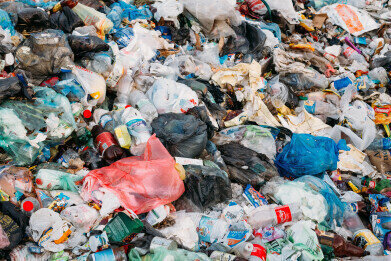Environmental Laboratory
How environmentally friendly is oxo-biodegradable plastic?
Feb 14 2024
As the global community grapples with the escalating crisis of plastic pollution, biodegradable plastics, particularly those incorporating oxo-biodegradable additives, have emerged as a beacon of hope. These innovative materials are designed to address the enduring environmental footprint of conventional plastics by facilitating a more rapid and eco-friendly degradation process. This exploration delves into the chemical mechanisms behind d2w additives, their efficacy in preventing microplastics formation, their impact on the leaching of biotoxic additives, and concludes with an assessment of their overall safety and utility in combating plastic pollution.
Oxo-biodegradation technology represents a pioneering approach to making plastic materials biodegradable. The mechanism hinges on incorporating a pro-degradant additive into traditional plastic formulations. These additives catalyse the breakdown of long polymer chains into shorter, more brittle fragments through a process known as oxidative degradation, induced by exposure to UV light, heat, and oxygen. This initial breakdown significantly reduces the material's resistance to microbial attack, thereby facilitating its subsequent biodegradation into water, carbon dioxide, and biomass. The key lies in the additive's ability to disrupt the polymer's stability, making it susceptible to natural decay processes.
One of the most pressing concerns in the realm of plastic pollution is the generation of microplastics, tiny fragments that persist in the environment and pose significant threats to marine life and human health. The promise of oxo-biodegradation additives lies in their potential to ensure complete degradation of plastics to a molecular level that precludes the formation of microplastics. By accelerating the disintegration process to a point where plastics can be fully assimilated by microorganisms, these additives aim to prevent the accumulation of plastic fragments in the environment. However, the effectiveness of this mechanism is contingent upon environmental conditions conducive to oxidative degradation and subsequent microbial action.
A critical consideration in the evaluation of biodegradable plastics is their content of biotoxic additives, such as phthalates and BPA, which are known for their endocrine-disrupting properties. The degradation process facilitated by biodegradation additives raises questions about the potential for accelerated leaching of these harmful substances into the environment. While this technology focuses on the polymer matrix's breakdown, the fate of incorporated additives during and after degradation is a complex issue that depends on the specific chemical structures of the additives and the environmental context. Research into these dynamics is crucial for ensuring that biodegradable plastics do not inadvertently exacerbate the pollution problem by releasing toxic compounds.
The advent of biodegradable plastics represents a significant step forward in the quest for sustainable materials management. However, the assessment of their safety and efficacy as a solution to plastic pollution requires a nuanced understanding of their environmental interactions. The potential of these materials to prevent microplastics formation and mitigate the leaching of hazardous additives is promising, yet contingent upon rigorous scientific validation and environmental monitoring.
Critically, the deployment of biodegradable plastics must be accompanied by comprehensive waste management strategies that recognize the specific conditions required for their effective degradation. Moreover, the development of standards and regulations to ensure the safe breakdown of these materials and the minimization of toxic additive release is imperative.
Biodegradable plastics offer a compelling approach to reducing the environmental impact of plastic waste. Their ability to degrade into harmless end-products could significantly diminish the volume of persistent waste in landfills and natural habitats. However, the journey from promise to practice is fraught with scientific, regulatory, and practical challenges. The prevention of microplastics formation and the safe management of biotoxic additives represent critical areas for ongoing research and innovation.
While biodegradable plastics equipped with oxo-biodegradation additives embody a potential breakthrough in materials science, their role as a definitive solution to plastic pollution is not yet assured. Realizing their promise requires a concerted effort among scientists, policymakers, and industry stakeholders to ensure that these materials deliver on their environmental potential without unintended consequences. The path forward hinges on the development of a holistic approach that encompasses not only the technological advancement of biodegradable plastics but also the ecological stewardship of our planet.
Digital Edition
AET 28.2 April/May 2024
May 2024
Business News - Teledyne Marine expands with the acquisition of Valeport - Signal partners with gas analysis experts in Korea Air Monitoring - Continuous Fine Particulate Emission Monitor...
View all digital editions
Events
Jul 30 2024 Jakarta, Indonesia
China Energy Summit & Exhibition
Jul 31 2024 Beijing, China
2024 Beijing International Coal & Mining Exhibition
Aug 07 2024 Beijing, China
IWA World Water Congress & Exhibition
Aug 11 2024 Toronto, Canada
Aug 25 2024 Stockholm, Sweden and online









.jpg)








